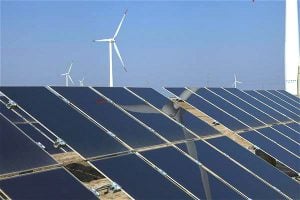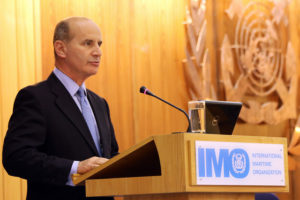Electric utilities in Germany and the US are experiencing an unprecedented change in their operating environment, which requires a broad re-invention of business models. The interaction between disruptive trends in technology, market dynamics and policy is driving this transatlantic, indeed global, phenomenon, one that is likely to accelerate over the next few years.
Decentralised energy resources on the supply and demand side, more flexible and intelligent grid systems, and more engaged and demanding consumers require utilities to deeply change their mindset and business models. In both countries, profound reforms in regulatory and market frameworks are under way. They will give utilities the chance not only to survive, but to become engines in the transition to a low-carbon energy system.
The disruption to the traditional utility model has become apparent in the devastation wrought upon Germany’s ‘Big 4’ utilities. E.ON, RWE, EnBW and Vattenfall, which for decades dominated the power system through centralised fossil- and fissile-fueled plants, have lost about 70% of their market capitalisation since 2008, and are carrying enormous debts.
This crisis has triggered major reorganisation plans and write-offs, and an intense search for new business models. E.ON, the world largest utility company in terms of revenues, is even planning to break up, spinning off its coal- and natural gas-fired assets into a new company, and focusing on renewables, nuclear, smart customer services and distribution.
Germany’s fully deregulated power market has become very competitive and decentralised, with a growing number of citizens, cooperatives, farmers and manufacturers independently generating 47% of the country’s renewable energy. Ambitious ‘Energiewende’ (‘energy transition’) policies are shifting the energy system of Europe’s most populated and industry-heavy country from coal and nuclear to energy efficiency and renewables. Pushed by the ‘Energiewende’, German utilities have been pushed to grab a head start in the global utilities transformation process.
In the US, established utility models are also being put to the test. Several utilities have started to adapt; others continue to resist change. Innovative business models in the US will likely be as heterogeneous as its power markets, where energy policy is determined at the state level, deregulated and regulated market structures co-exist, and where 192 investor-owned utilities serve over 73% of customers, alongside 3,000 municipal utilities and electric cooperatives.
Transformative trends
The trends pressuring the industry are similar in the US and Germany, significantly increasing financial, competitive and policy/regulatory demands on utilities.
Stagnating energy demand: Economic slowing is the main reason for declining electricity demand since 2008. Better energy efficiency measures, particularly stringent building codes and appliance standards, will continue to reduce the importance of kWh-sales. Lower revenues lower utilities’ credit ratings and make capital more expensive to access, squeezing utilities’ investment capabilities.
Profound technological change: Technology innovation and reductions in cost have accelerated the deployment of smart grid technologies and distributed energy resources on both the supply and demand side, through technologies such as renewable energy, demand response, energy efficiency, storage and electric vehicles.
These technologies have called into question the century-old system of centralised power generation and distribution, and accelerated the defection of customers from the grid, thus creating a vicious circle for utility revenues.
Two-way flows of power and information will allow the distribution grid to become a smart, interconnected and interactive platform with a multitude of market actors interacting. This will require utilities to increase grid investments and operating expenses to integrate distributed resources. In the US, investor-owned utilities are expected to invest US$100 billion annually over the next few years, with that investment spent for the most part on distribution systems rather than generation.
New roles for market stakeholders: Enabled by new technologies, customers can become active power agents or ‘prosumers’ who will consume, generate, and trade power. They will thus need to be situated at the heart of utility operations. Simultaneously, innovative new service providers will enter the market and increase competition for utilities.
More stringent energy policy and environmental regulation: 34% of carbon emissions in the US and 33% in Germany are attributed to the power sector. To tackle climate change and address geopolitical considerations, energy policymakers intend to clean up both countries’ generation mix and reduce energy consumption. For utilities in both countries this means increased compliance costs from fuel switching and carbon emission reductions, as well as potentially stranded fossil fuel assets.
Key elements in business model innovation:
Utility executives see the need to adapt, but are still evaluating how to do so. My report for the Heinrich Boell Foundation provides examples from the US and Germany, showing that successful business models must embrace two key features: a more distributed and integrative approach to generation and/or distribution, and greater emphasis on customers and services in retail sales.
Renewable energy generation – whether large-scale or distributed, utility- or customer-owned – provides utilities with a unique opportunity to diversify power portfolios and hedge against fuel price risks, to test new ownership and leasing models (e.g. in utility-led community solar projects), to expand their experience in integrating intermittent resources, and to set up new integrative power management systems, such as aggregated virtual power plants. Partnerships with innovative service providers in the fields of data collection and analytics, customer outreach and storage will help utilities speed and scale up emerging energy technologies and services.
On the distribution side, US utilities are considering a new role that energy expert Peter Fox-Penner calls ‘smart integrator’, where utilities operate the grid as an open platform and enable a variety of generators, service providers and customers to interact. In Germany, regional and municipal utilities are establishing purchasing groups to aggregate buying power, and establishing regional networks to overcome the complexities of integrating renewables.
In serving retail clients, a greater emphasis on customers and services offers multiple areas for business model innovation. Utilities have started providing targeted electricity packages that include customised pricing and green tariffs. Diversifying retail services by offering new distributed energy services such as energy management, electric vehicle charging, PV system installation, and storage or energy-efficient retrofits will help keep customers grid- and utility-connected and hence prevent load defection.
Reforms under way
Nevertheless, utilities cannot walk the walk alone; they need a revised regulatory, institutional and financial framework. Innovative new thinking in the US and Germany seeks to shape new market designs that will better integrate distributed energy resources, and to create performance-based ratemaking practices and new revenue models that will allow utilities to develop new business models. New York’s Reforming the Energy Vision (REV), regulatory changes in California, Massachusetts, Minnesota, and Hawaii, and Germany’s recent decision to redesign its market as ‘electricity market 2.0’ (with an integrated security reserve) will reverberate across the US and Europe, and could also inform nascent power sector reform in China, helping to accelerate that country’s shift towards a cleaner energy mix.







